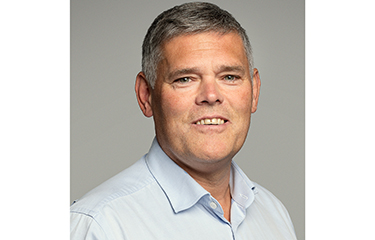Frøya, Norway-based SalMar reported its operational earnings before interest and taxes (EBIT) topped NOK 1 billion (USD 95 million, EUR 89 million) in Q4 2022, which marked the end of what the company called an “eventful year.”
The company posted record-high harvest volume in Q4 2022, harvesting 62,700 metric tons (MT) of salmon. Overall, the company posted an operational EBIT per kilogram of NOK 16.05 (USD 1.53, EUR 1.44). A “solid performance” in North Norway and record harvests in Iceland helped boost the company's total harvest. Its only division that struggled was Central Norway, due to biological challenges, it said.
“Our committed and highly-skilled employees have continued to deliver solid operational performance, but due to biological challenges it has been a quarter with mixed results for the group. The biological challenges in Central Norway were handled well even though it had negative effects in the period,” SalMar CEO Frode Arntsen said.
For the full year, the company harvested 193,700 MT, and achieved an operational EBIT of NOK 4.46 billion (USD 427.9 million, EUR 400.7 million) and an operational EBIT per kilogram of NOK 23.04 (USD 2.21, EUR 2.07).
“We have never delivered as much salmon to customers all over the world as we have done in 2022. This has resulted in a good financial result for the full year which is driven by strong operational performance and strong demand of salmon with consequently increased salmon prices,” Arntsen said.
SalMar's operating revenue in Q4 2022 reached NOK 6.4 billion (USD 614 million, EUR 575 million), a significant increase from the NOK 4.6 billion (USD 441 million, EUR 413 million) it posted in 2021. For the full year, the company had NOK 20.1 billion (USD 1.9 billion, EUR 1.8 billion) in revenue in 2022, jumping from NOK 15 billion (USD 1.4 billion, EUR 1.3 billion) in 2021.
Profit before tax from continuing operations, however, slumped in Q4 2022. Salmar posted a NOK 222 million (USD 21 million, EUR 19 million) loss in 2022 compared to a NOK 493 million (USD 47 million, EUR 44 million) gain in Q4 2021. That loss was also down from a profit before tax of NOK 850 million (USD 81 million, EUR 76 million) in Q3 2022.
For the full year, SalMar's profit before tax from continuing operations reached NOK 4.5 billion (USD 431 million, EUR 404 million), up from NOK 3.3 billion (USD 316 million, EUR 296 million) in 2021.
The company called 2022 an “eventful year” that will shape its future going forward, mainly referring to the merger between SalMar and Norway Royal Salmon which was initiated in February and was finalized in November 2022. The company acquired NRS through its acquisition of NTS.
SalMar’s acquisition of NTS also included assets originally belonging to SalmoNor, which was bought out by NTS in 2021.
“With the completion of the acquisitions of NTS, NRS, and SalmoNor and addition of more than 500 new colleagues and significant investments along our entire existing value chain, SalMar has grown to become the world’s second-largest salmon producer,” Arntsen said. “We have created an even stronger foundation for growth in SalMar. We will continue our efforts to provide healthy and sustainable salmon and drive further improvements in our industry at sea and on land.”
Looking forward, SalMar said its new investments in Norway will remain paused due to uncertainty surrounding Norway’s proposed resource tax on salmon.
"Both level and structure [of the tax] will divert investments from aquaculture in Norway to other countries and other industries. In addition, the proposal will reduce the investment capital in Norway’s largest renewable export industry. This will strongly affect innovation power and investments on the Norwegian coast. The result will reduce the Norwegian industry and ownership and put Norwegian industrial workplaces and Norway’s position as the leader in the industry at risk,” he said. “No other country has introduced a tax of this kind and at this level on its food production. It is still unclear to us what framework conditions we have to deal with two months into 2023. This is unsustainable for one of Norway's most important export industries.”
Overall, SalMar said to “expect significant volume growth” for the company in 2023, largely thanks to its multiple acquisitions. The company is setting its volume guidance for Norway at 243,000 MT, Iceland at 16,000 MT, and Scotland at 37,000 MT.
Photo courtesy of SalMar







